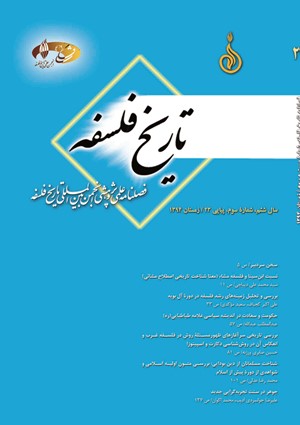شناخت مسلمانان از دين بودايي: بررسي متون اوليه اسلامي و شواهدي از دوره پيش از اسلام
محورهای موضوعی : پیوند اندیشۀ فیلسوفان و مکاتب فلسفی با زمانه و شرایط اجتماعی و فکری
1 - دانشگاه آزاد اسلامی
کلید واژه: دين بودايي اسلام تاريخنگاري اسلامي سمنيه بوداسف صابئين ايران باستان,
چکیده مقاله :
در مکتوبات اولية اسلامي، توصيف دقيق و روشني از انديشهها و تعاليم بودايي ارائه نشده و غالب سخنان، بسيار کلي و ناقص است. در بيشتر منابع، باورها و اعمالي به بودائيان نسبت داده ميشود که يا اساساً نادرست است و يا اصلاً اختصاص به بودائيان ندارد و ساير سنن هندي نيز بدانها پايبندند. براي يافتن علت اين امر، بايد به دورة پيش از اسلام رجوع کرد و گسترش دين بودايي را در مناطقي که بعدها در زمرة سرزمينهاي اسلامي قرار گرفتند، بررسي نمود. بنظر ميرسد که آشنايي ناقص با تعاليم بودايي اختصاص به دورة اسلامي ندارد، بلکه دستکم در نواحي غربي و مرکزي ايرانِ پيش از اسلام نيز اوضاع اينگونه بوده است. اما در نواحي شرقي ايران و در مسير جاده ابريشم، مراکز بودايي مهمي وجود داشته است. با اين حال، پس از ظهور اسلام، صومعههاي بودايي اين مناطق نيز بتدريج ويران شد و جز خاطرهيي مبهم چيزي از آنها باقي نمانده است. از اينرو، زماني که تاريخنگاران اسلامي ميخواستند از دين بودايي سخن بگويند، به منبع موثقي دسترسي نداشتند. نوشتار حاضر در پي روشنسازي زمينههاي مذكور ميباشد.
In early Islamic texts, no accurate and clear description of Buddhist thoughts and teachings has been provided, and most of the related statements in such texts are very general and incomplete. In most sources, some beliefs or acts are attributed to Buddhists which are either basically incorrect or not at all related to Buddhists but followed by other Indian religious sects. In order to find the reason behind this problem, one should refer to the pre-Islamic period and explore the dissemination of Buddhism in those regions which later turned to Islam. Apparently, a defective knowledge of Buddhist teachings is not restricted to the Islamic period; and it was also the same case at least in the western and central regions of Iran before Islam. However, in the eastern parts of Iran and alongside the Silk Route, there were some very important Buddhist centers. Nevertheless, after the rise of Islam, the Buddhist monasteries of these regions were gradually destroyed, and nothing remained from them except a vague memory. Accordingly, when Islamic historiographers decided to speak of Buddhism, they had access to no authentic sources. The present paper is intended to shed some light on the above issues.
